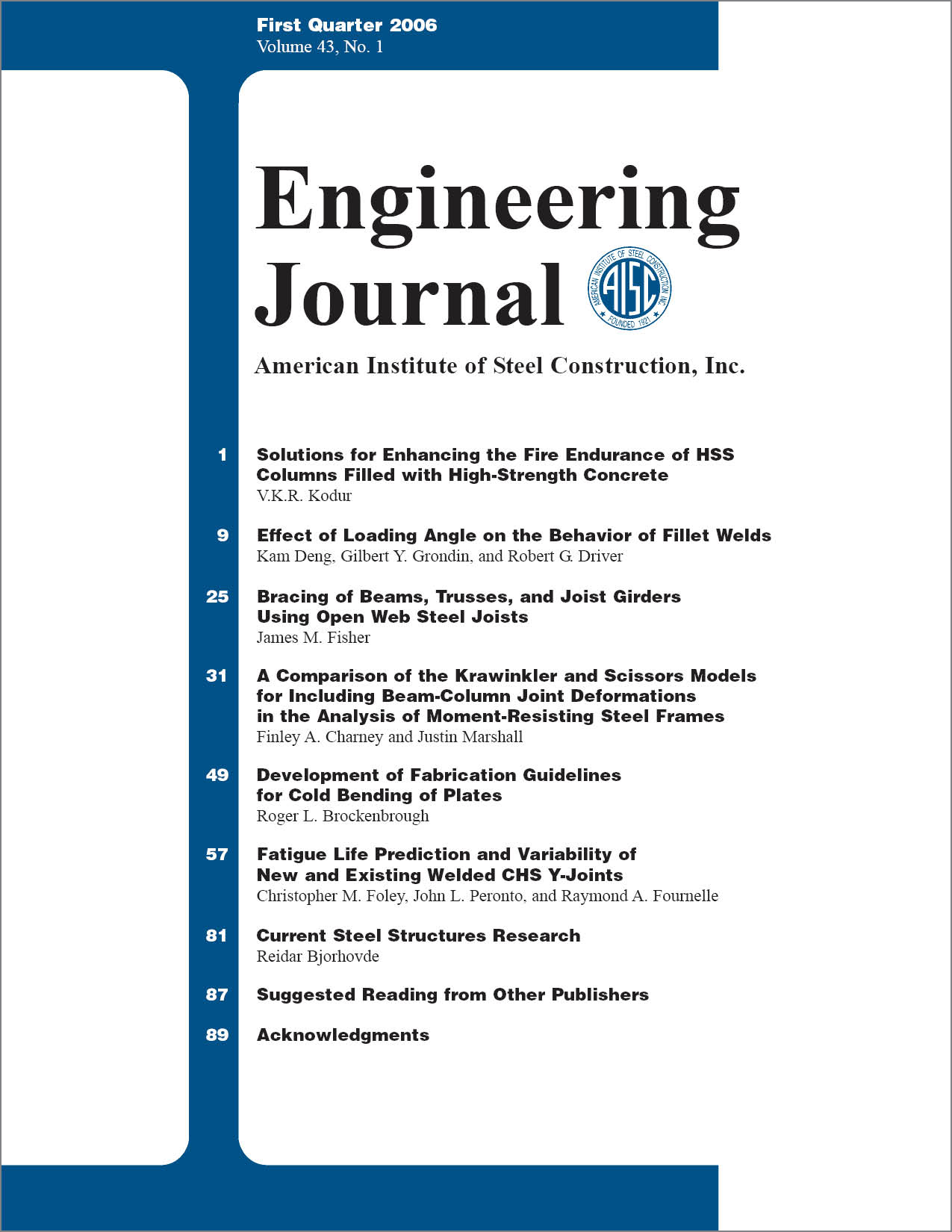Development of Fabrication Guidelines for Cold Bending of Plates
DOI:
https://doi.org/10.62913/engj.v43i1.867Keywords:
FabricationAbstract
To avoid plate cracking during cold bending, it is necessary to use a suitable minimum inside bend radius, which typically varies with plate thickness and grade. However, because of the addition of new plate grades over the years, it was felt that the limits that had been given in ASTM A6 until recently, had not been developed on a consistent basis. Also, those limits were intended for material acceptance purposes using small specimen tests, and did not directly reflect fabrication limits. Therefore, a program was initiated by AISI about 1996 to develop rational limits directly applicable to plate fabrication. In the initial study, conducted by Concurrent Technologies Corporation, small specimens of various grades and thicknesses were cold formed using different bend radii and evaluated. In subsequent work, the present study was made to review that information, review historical forming limits, and develop a rational set of consistent limits for fabrication guidelines. It was concluded that radius-to-thickness limits from idealized bending limit diagrams developed from specimen tests could be used to establish fabrication limits, if appropriate allowances were made for conditions in fabrication that differ from those in the tests. This includes adjustments to account for plate properties that approach minimum specified values rather than the typical properties of the test material, thicknesses greater than those tested, and edge or surface imperfections that may be present in typical fabrication. After making such adjustments, a table of suggested limits was developed and subsequently adopted in ASTM A6. The adopted values were generally more liberal (allowed tighter bends) than those that had been given in the AISC Manual, thus providing greater flexibility in fabrication in most cases.

